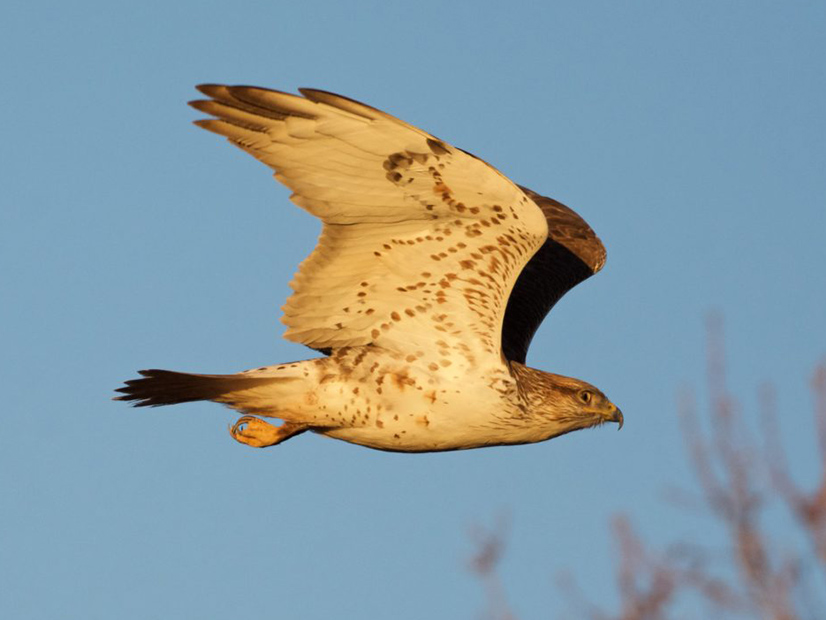
The draft environmental impact study for a proposed southeast Washington wind and solar farm has turned up concerns about nesting areas for the region’s ferruginous hawks.
The Washington Energy Facility Site Evaluation Council released the draft EIS Monday and will accept public comments through Feb. 1, 2023. No date has been set for when the final environmental impact report will be released. EFSEC will eventually make a recommendation to Gov. Jay Inslee on whether to approve the project.
The report looks at a proposal by Scout Clean Energy of Boulder, Colo., to build up to 224 wind turbines — each about 500 feet tall — on 112 square miles of mostly private land in the Horse Heaven Hills region four miles south of Kennewick. About 294 acres of that land would also contain solar panels.
The wind and solar project is expected to have a nameplate capacity of 1,150 MW, roughly the same output as Columbia Generating Station, a commercial nuclear reactor just north of the Tri-Cities area, which includes Kennewick.
Many Kennewick residents oppose the project because the turbines would be seen by residents on the south side of the city.
Residents also cited concern about the turbines’ effects on ferruginous hawks. While ferruginous hawks are not listed as a threatened or endangered species by the federal government, they are listed as endangered by the state of Washington. The birds are among the nation’s largest hawks, with average wingspans of 56 inches. They live in grasslands and shrub steppes, which are found extensively in south-central and southeast Washington. Shrub steppe is a mostly treeless semi-desert filled with sagebrush and a complicated ecosystem at ground level.
About 60% of the nesting pairs are found in Washington’s adjacent Benton and Franklin counties. The Horse Heaven Hills are in Benton County.
The draft EIS identified potential impacts on ferruginous hawk habitat and populations through loss of habitat and potential mortality from collision with wind turbines.
“As these impacts could result in a high-magnitude impact on ferruginous hawks, EFSEC has proposed additional mitigation measures specific to avoiding and reducing project-related impacts on ferruginous hawks, including exclusion of turbines within core ferruginous hawk habitat and curtailing turbine operation while ferruginous hawks are present,” the draft report said.
Mitigation measures would include avoiding siting turbines and solar panels within two miles of ferruginous hawk nests. Another measure would be to stop the turbines from operating during breeding season.
The draft recommended a two-year survey of the turbines’ impacts on the area’s birds, including American white pelicans, eagles, burrowing owls, great blue herons, Sandhill cranes, tundra swans, loggerhead shrikes, sagebrush sparrows, prairie falcons, sage thrashers, Vaux’s swifts and ring-necked pheasants. The draft also recommended surveys of the area’s striped whipsnakes, sagebrush lizards, Townsend’s big-eared bats and Townsend’s ground squirrels.
